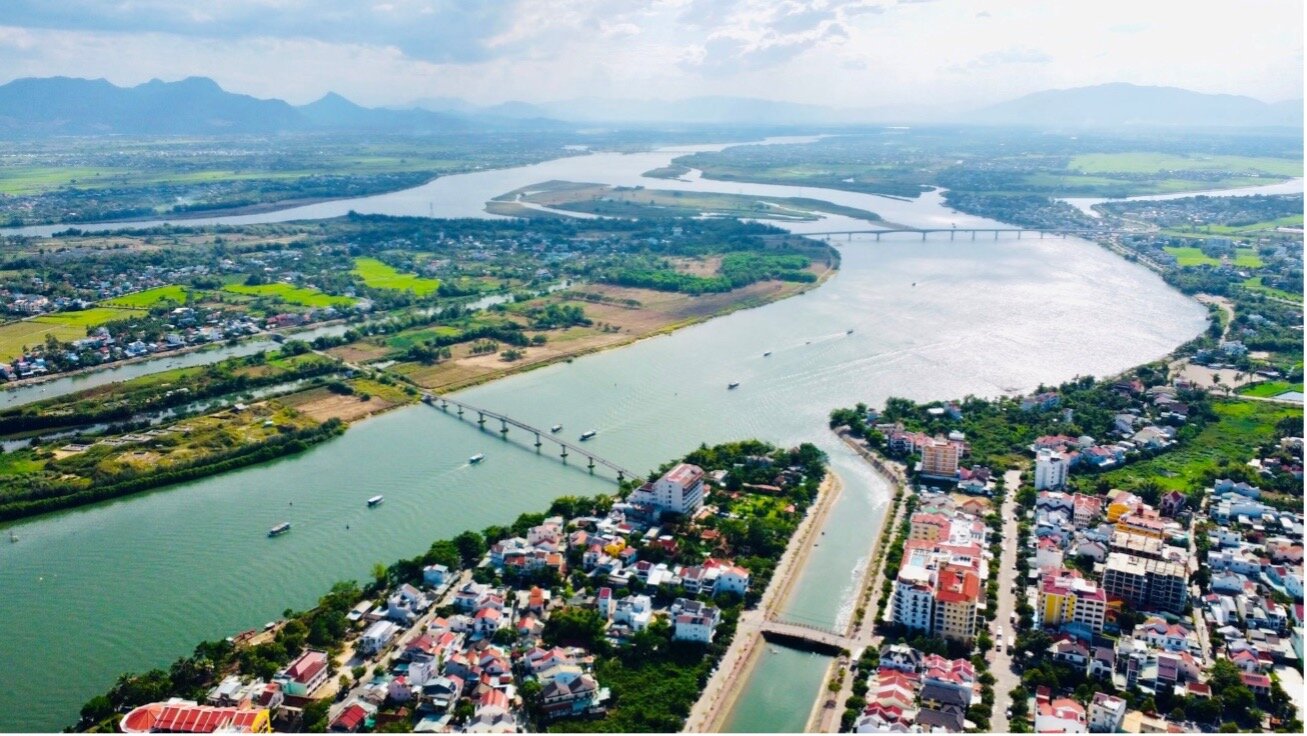On the afternoon of April 18, in Da Nang City, a project worth over 18 billion VND was officially launched, opening up new hope for protecting and preserving the Vu Gia – Thu Bon river basin.
The Global Environment Facility (GEF) funded the project through the United Nations Development Programme (UNDP) and is being implemented in six Southeast Asian countries, including Vietnam. In Vietnam, the project will be carried out from 2025 to 2027.
It aims to reduce pollution, control salinity intrusion, and preserve the flow of strategic river basins while enhancing resource management capacity in the context of increasingly complex climate change impacts.
The Vu Gia - Thu Bon river basin, spanning Da Nang and Quang Nam, was once the lifeline of a vast region in Central Vietnam. However, rapid urbanization, industrialization, and population growth have disrupted the river’s natural rhythm over the years.
 The Vu Gia – Thu Bon river basin. Photo: INT.
The Vu Gia – Thu Bon river basin. Photo: INT."Although the basin receives high rainfall, the area does not have abundant water resources. It faces pressure from all sides, from infrastructure development, climate change, to a lack of coordination in water resource management. Therefore, we need a different, more comprehensive, and interdisciplinary approach," shared Ms. Nguyen Thi Thien Phuong, Deputy Director General of the Department of Environment under the Ministry of Agriculture and Environment (MAE).
The project will implement solutions to improve water quality, manage waste, and restore environmental flows — a key factor in maintaining the river ecosystem’s vitality. More importantly, local authorities, businesses, and communities will be actively involved. Through technical support, training, and consultation, the project not only aims to rehabilitate the environment but also to strengthen the capacity of those who live by and depend on the river.
Ms. Aimee T. Gonzale, Executive Director of the Partnerships in Environmental Management for the Seas of East Asia (PEMSEA), believes this is an opportunity for Vietnam to demonstrate its leadership role in regional environmental cooperation. If successful, this model could be replicated in many other areas where the challenges of unsustainable development are similar to those of squeezing rivers.